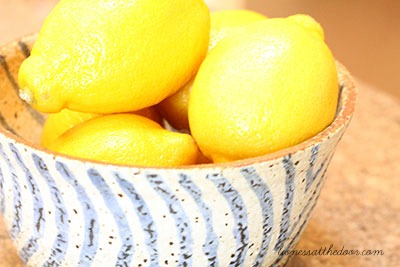If you have read the last two posts and have done the homework, way to go! I am so impressed!
Or, maybe you haven’t decided to get down to business yet, and that’s ok. However, when you do decide to put all of this life-changing information into application, please go back to Step 1 and proceed from there.
Step 3 is what I call “nutrivizing.” So far, you have gathered your meal ideas and plugged them into a system or calendar. Next, we want to “tweak” those meals to make them as nutritious as possible.
However, you could stop after Step 2…

Step 3 is about putting time in on the worthy goal of tweaking your meal plan to include more fruits, vegetables, whole grains, less sugar, etc. So if you want to go to the next level, keep reading.
If not, no worries! Take your finished Step 2 and run with it! Look over your meals, make a shopping list, (then hang on to that shopping list by tucking it next to your weekly plan so you can use it when you rotate to this week’s plan again!), go grocery shopping if need be, post your first week’s menu on the refrigerator, and start cooking! Remember that vitamin “L” goes a long way!
If you’d like to keep going, this step in meal planning requires a bit of preamble, so here goes.
I have read and studied many different philosophy’s about nutrition. That said, many of them are at odds with each other! So, of course you are getting my take on what nutritious means which is, enjoying whole, real, food prepared with traditional methods and eaten in moderation.
Let me show you what I mean using brown rice as an example.
Brown rice is intact, that is it hasn’t been processed. It still has the layers of bran that serve to protect the fatty acids where the nutrients are found. Brown rice is rich in vitamins and minerals, though I am convinced we don’t know all of the benefits of eating food as whole food. Our society has become used to processed versions of rice and many other foods. Because they have been denatured, they cook faster, slide through digestion easier and last longer on the shelf because they are dead. Consequently we pay the price of these shortcuts with our health. Less fiber, less nutrition and slimy. Think about the difference between sprouted whole grain bread with 4 or 5 ingredients versus super-light white bread with 20 ingredients or more! Talk about refined and slimy. There’s a trick, the fewer the ingredients the better! What is in broccoli? Broccoli!
So you might be thinking, I like brown rice, or I could get used to it because I want to be healthy, but what about my husband!? I have been a wife, mother and health coach long enough to know that most of the time women are more worried about what their husbands will eat than they are about what they can feed their kids!
Don’t worry, just breathe while I add a little more to this picture.
Let me introduce the idea of using traditional cooking methods if it is new to you. In the 1930’s a man named Weston A. Price, a dentist, traveled with his wife around the world researching the connection between dental and overall health to diet. His book, Nutrition and Physical Degeneration, is an extensive report about what they learned. He became quite a proponent of of three things, as I see it. One, that there is benefit in eating foods that are grown in your climate. Two, that whole food is far superior to processed food and three, that there are traditional ways of preparing food that make it easier to be used by our bodies.
An example is preparing wheat flour with natural yeast (see my post titled “Let’s Eat Cake” to learn more). Another is soaking and souring whole grains (yep, our brown rice) or beans and legumes.
What’s the point of soaking and souring or traditionally preparing food? It is that grains are wrapped in a protective layer (like the rice in its bran) which preserves them for a long period of time with their goodness intact. We could discuss phytic acid and the role some believe it plays in the digestion of grains, but for this post, I want to emphasize that traditional methods of preparing food obviously make a large difference in overall health as Dr. Price witnessed in his travels. Check out Dr. Price’s book or the Weston A. Price foundation’s website and see for yourself.
Speaking of which, the oatmeal I ate for breakfast this morning had been soaking in water and a tiny bit of apple cider vinegar since yesterday afternoon. If you have trouble using grains because you feel sick to your stomach after eating them, this method of preparing them may be a Godsend to you. Besides that, it makes breakfast preparations much faster in the morning! Really, soaking makes life easier not harder, but you do have to get into the groove of thinking ahead. But that’s the point of a meal plan right?
Nutrivizing then, will mean looking over your meals and asking questions like:
Are there processed grains (pasta, flour or grain) used in these recipes that could be changed to whole grains? (There are some great grains you may not have tried yet!)
What fresh fruits and vegetables can I add to my meals? (The highest quality you can afford.)
How can I prepare my meals more traditionally, cooking more slowly and on lower temperatures?
How can I incorporate these ideas into the time I have for cooking?
Time for the disclaimer: The philosophy at Lioness at the Door is that cooking something is better than cooking nothing at all! Please don’t get bogged down in any of the points I have been illustrating here. Think about them and continue to learn new skills and ways of doing things, and slowly begin to implement all the good you can. However, I caution you not to get into black-and-white, all-or-nothing thinking, become paralyzed and stop cooking at all. That is not progress, so please don’t go there. If it’s a crazy day and frozen burritos are the only thing you can possibly get on the table, then serve them with a lot of love and make plans to eat better tomorrow.
Lastly, in the changes you may want to make to feed your family better, think baby steps. Let your family know you are learning to prepare healthier meals for them and enlist their help. Slowly introduce new foods. Show them your flexibility in trying new things and remember that it can take 10-20 times trying something new before it tastes good! So avoid labeling your taste preferences with rigid decisions about what you (or your spouse or kids) do or don’t like.
God bless you and the good you are doing!
I believe that the world is spinning for us, for our experience as families and that family life revolves around the kitchen table.
May your efforts be blessed by the small quiet whispering that you are doing a great work. Giving your family your time and efforts along with your love and happy heart: That is vitamin L!
Love,
Jacque
P.S. Want more information? Check out Michael Pollan’s In Defense of Food and French Kids Eat Everything by Karen LeBillon.
[easy_media_download2 url=”https://lionessatthedoor.com/wp-content/uploads/2021/04/Meal-Blocking-NEW-Color.pdf” text=”Download Free Meal Planning Worksheet” class=”free-menu-planning-download-button” bg_color=”#e25656″ hover_bg_color=”#f88b8b” width=”100″ target=”_blank”]

